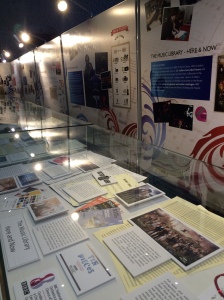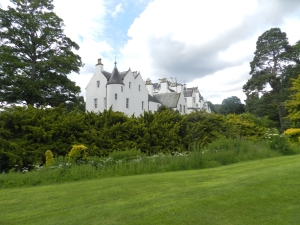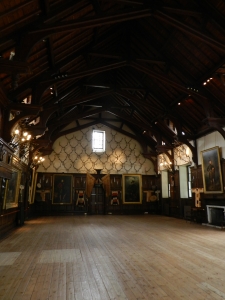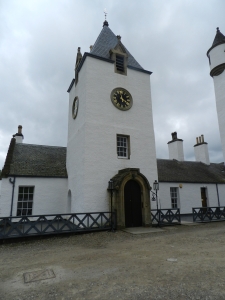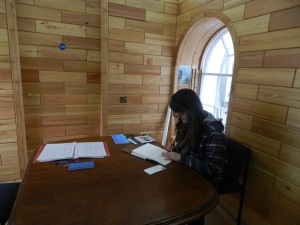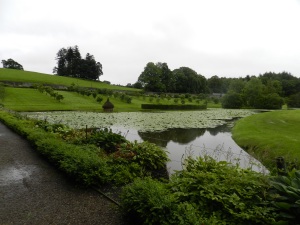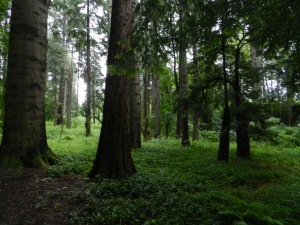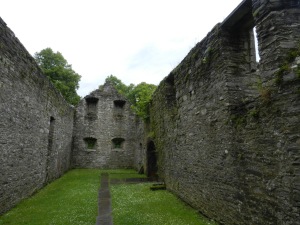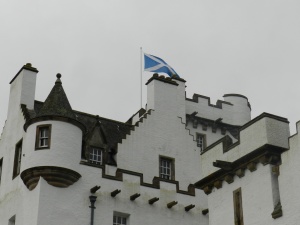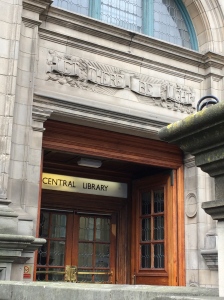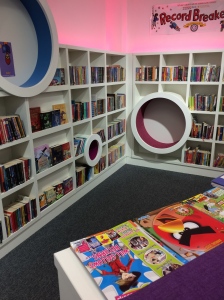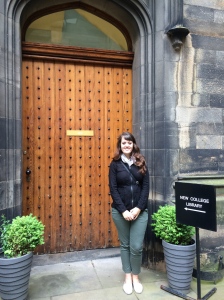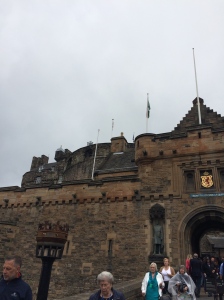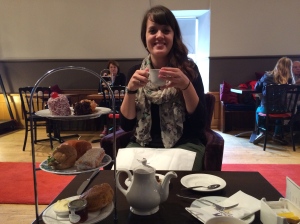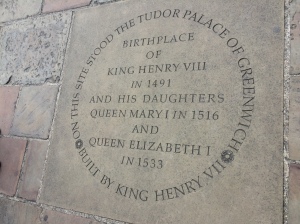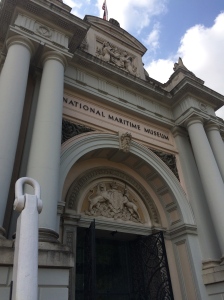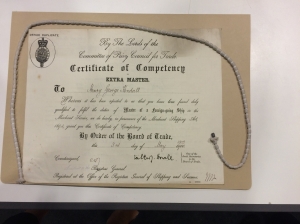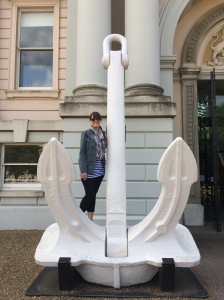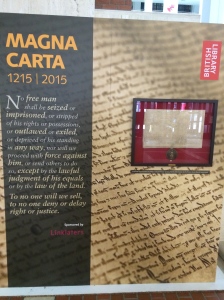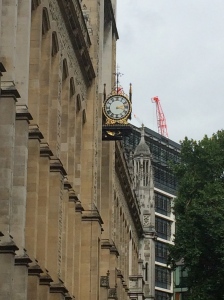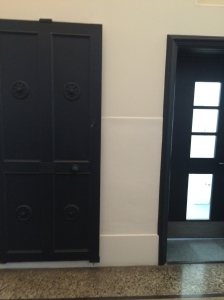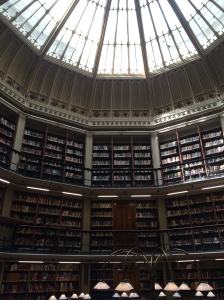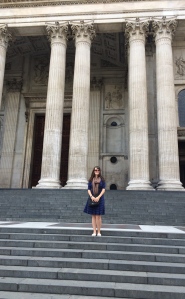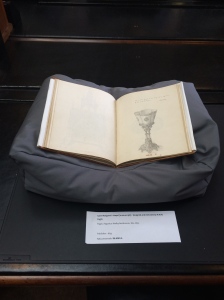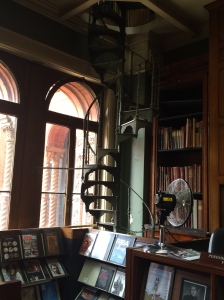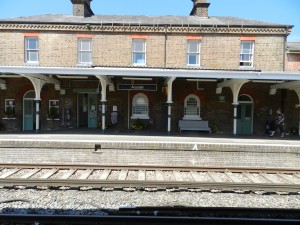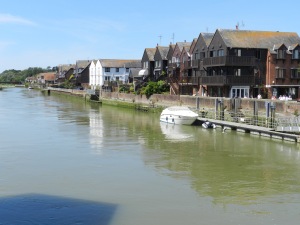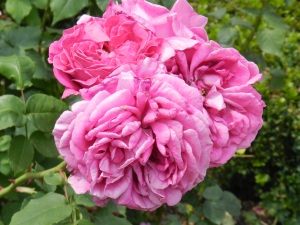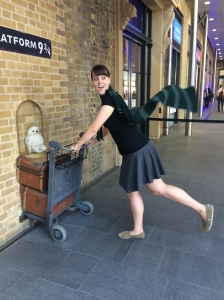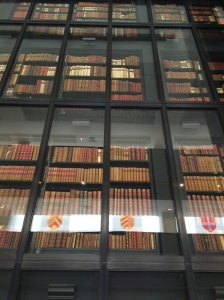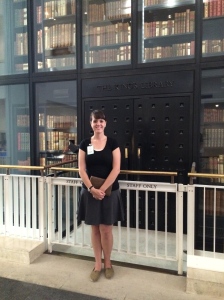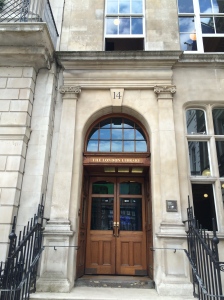On this Thursday, we once again split into two groups for our tours. Since I joined the second group, I had the opportunity to walk around the exhibits before the guided tour of the archives. The British Museum contains a large Egyptian exhibit, which did not disappoint. There were many large statues of pharaohs and sphinx. There were more mummies than I have ever seen in one location including two full rooms of mummies with their sarcophagus’. Additionally, I visited the medieval exhibit, which was not as enjoyable as the Ashmolean Medieval exhibit. There were lots of church related artifacts but no real big pieces. Furthermore, I went to the Enlightenment gallery that once contained the King’s Library now housed at the new British Library. There room retained the look of a library with shelved books and artifacts found during the Enlightenment period.

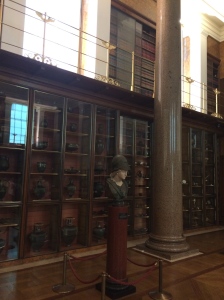
Enlightenment Gallery.
After viewing the museum, I joined back up with my group to tour the central museum archives. Each department within the museum contains their own archives, but everything goes through the central archives first. The central archives’ archivist brought us down to the storage rooms of the archives. At first glance the archives were organized beautifully in gorgeous bound books, however, the archivist would later tell us the books are damaging to the materials and not a good dell of help with organization. There are many random bound documents each organized into a different system each couple of decades.

Doors to Central Archives at the British Museum.
Along with informing our group of the archival system, our tour guide also gave us a brief history of the archives and the museum. Hans Sloane was the first collector of antiquities to donate to the nation. Along with two other collections, Parliament created the National Museum. Eventually, the Montagu House was purchased and the museum placed within their walls. Over time, the museum expanded and remolded to fit the growing collections. All this information can be found in the first records of the archives. The museum also formed a Trustee group. They had to agree on every purchase or donation. At first all went into the records as antiquities. Therefore, there are many records labeled antiquities. The archives also contain the trustee meeting minutes, letters and purchases.
Following our guide’s brief history, she moved onto the current state of the archives. They have yet to digitalize any of the archives and have only had an online catalog for the past 18 months. Both processes cost a lot of money. Additionally, the archives have no formalized organizational system. They’re random and multiple ways of recording. Some series have been divided and other bound books are missing information that is found in other areas. In general, the archives are an important aspect to the museum but are in need of more staff and support to weed through the mass amount of information.
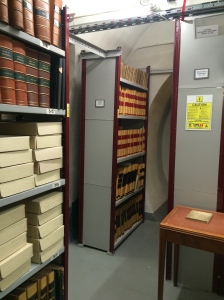
Some of the bound documents at the Central Archives.
Next on the agenda for the day was the Royal Geographical Society. This “tour” contained a very different structure to our other activities. The society had our whole group sit around a large table as the society’s librarian spoke to us of the collection and his job. As with other organizations, he gave us a brief history of the library and society. The Royal Geographical Society was founded in 1830 to form support for the science of geography and people going out on explorations. The collection now contains 2 millions items after donations and the many supported explorations.
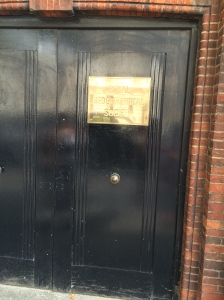
The Royal Geographical Society.
To give us the stories, the librarian organized his speech by first those explorations in the cold then those in the heat. The cold aspect consisted of adventures in the artic. The British in the 17th and 18th century were trying to find a passage way through the North Artic. To illustrate the stories, he showed us maps, photos, and artifacts from the explorers. By the 1920s, the societies main interests lie in Mount Everest. Once again, he used items from the collection to tell the stories. This included a shoe from the explorers and a set of goggles. As for the hot stories, they began with the desire to find the source of the Nile River. These events were told through the pictures, maps and artifacts related to the explorers and places. Throughout the whole time many items of the collection were shown to us but we were not allowed to take pictures of the items.
The uniqueness of the librarian’s job at the Royal Geographical Society includes acting as archivist, curator and researcher. The librarian gets to meet and work with actors to writers on projects dealing with the explorations. Additionally, he works with cruise lines on historical information about places the ships visit. Even though the society does not support explorations anymore, they give out grants to people working with indigenous people and books and maps are continually being added to the collection.
By the end of the day, I realized that both the librarian from the Royal Geographical Society and the archivist from the British Museum had to know the history behind the collection to fulfill their job duties. Both positions were heavily connected to artifacts within a museum collection.

